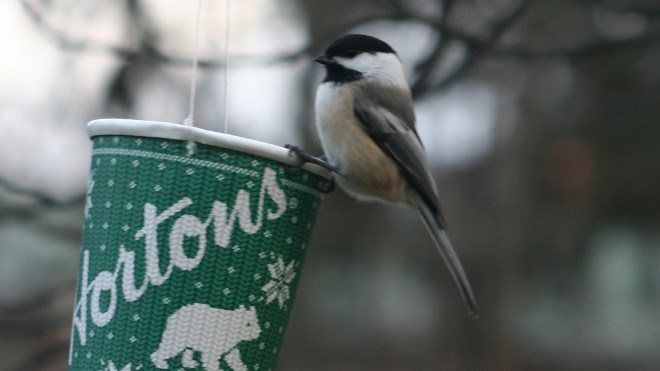It is 7:30 a.m., and the temperature reads 0 C. Not too bad. I have to get into the car and make a quick bypass drive to Chelmsford then east to Azilda. I am getting into position for my responsibility.
A dark black object sits on a telephone pole as I drive along the bypass. Few cars are on the road to witness the raven as I pass by. I am wondering what interesting creatures and experiences await the day.
For most people, Boxing Day, Dec. 26, is either a day to get some deals, a day to return some goods, or a day to share Christmas celebrations with family members. This year for some of us it was the annual Sudbury Christmas Bird Count. It's an annual event that consists of some 60 feeder watcher participants, and 15 regional pie slices in a 24-kilometre diameter circle, all covered by birders with cameras, binoculars and scopes.
This year was unique. Much of the time the birders that need to survey their sectors either use skis or snowshoes to get at some of those unique and hard-to-get-at places.
Not this year. The ground was brown and green. Snow came the day after the count. Dieter Schoenefeld co-ordinates the count with much planning weeks in advance of the count.
The tally is made at the end of the day at the Calvin Presbyterian Church off Auger Street. Some 20 trekkers arrive as the sun sets to express their adventures, and their tallies.
Areas covered include the Sudbury dump, a critical area, as it attracts many of the gull species and several raptors. This year there were several hundred herring gulls present there in the morning.
Long Lake, city centre, Blezard Valley, Lively, Copper Cliff, Bell Park and Ramsey Lake, and areas beyond are all part of the survey.
Birders attempt to count as many species and as many individuals as possible to get a sample representation of the winter birds in our region. Locally there is also a count in Mindemoya, Gore Bay, Killarney and Mashkinonje areas.
The information is compiled into a national databank that gives bird trends for a specific period in time, namely around the end of December.
Ramsey Lake was free of ice this year, so it was ideal for looking for late ducks and gulls. Common mergansers were found in a large flock on this lake as well as Kelly and Whitewater Lakes.
These colourful birds resemble loons, but tend to be much whiter with a dark green head and a red serrated bill. Ramsey Lake also had some other unusual activity this year. Two human swimmers and two lady kayakers were on and in the water for a late record of activity. Further out, someone was fishing.
At the end of the day the tally reached 42 species, but incorporating the feeder watcher observations and birds visiting feeders on count day will change this number a little.
Some of the highlights were Northern Cardinal, Northern harrier, Bald eagle, Ring-billed gull, White-throated sparrow, Northern shrike, green-winged teal and Rough-legged hawk. Winter finches were low in numbers.
Not to be undone, there were two American robins found; birds that perhaps know something we don’t. Would spring be on its way already?
Chris Blomme is an executive member of the Sudbury Ornithological Society and works with animals at Laurentian University. Have a question for Chris? Send it to [email protected].
Join Sudbury.com+
- Messages
- Post a Listing
- Your Listings
- Your Profile
- Your Subscriptions
- Your Likes
- Your Business
- Support Local News
- Payment History
Sudbury.com+ members
Already a +member?
Not a +member?
Sign up for a Sudbury.com+ account for instant access to upcoming contests, local offers, auctions and so much more.
